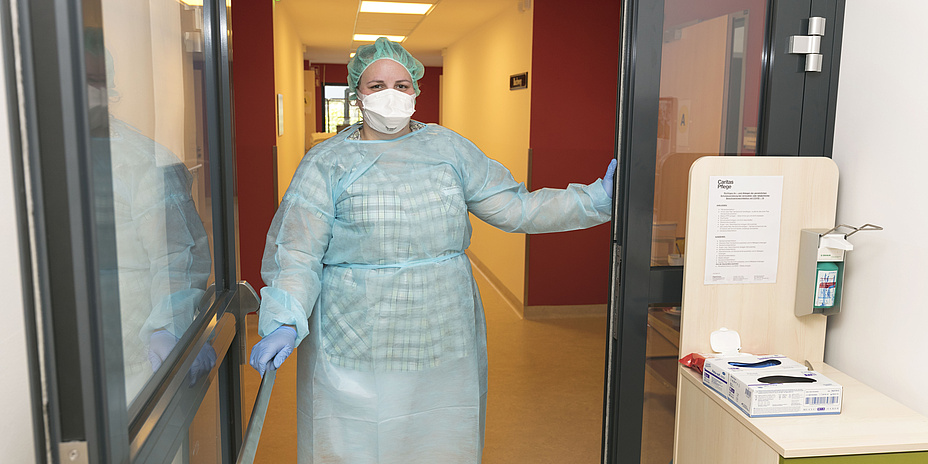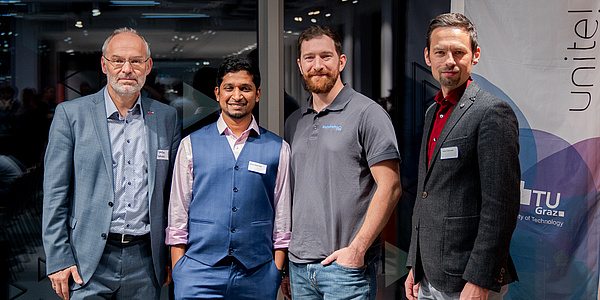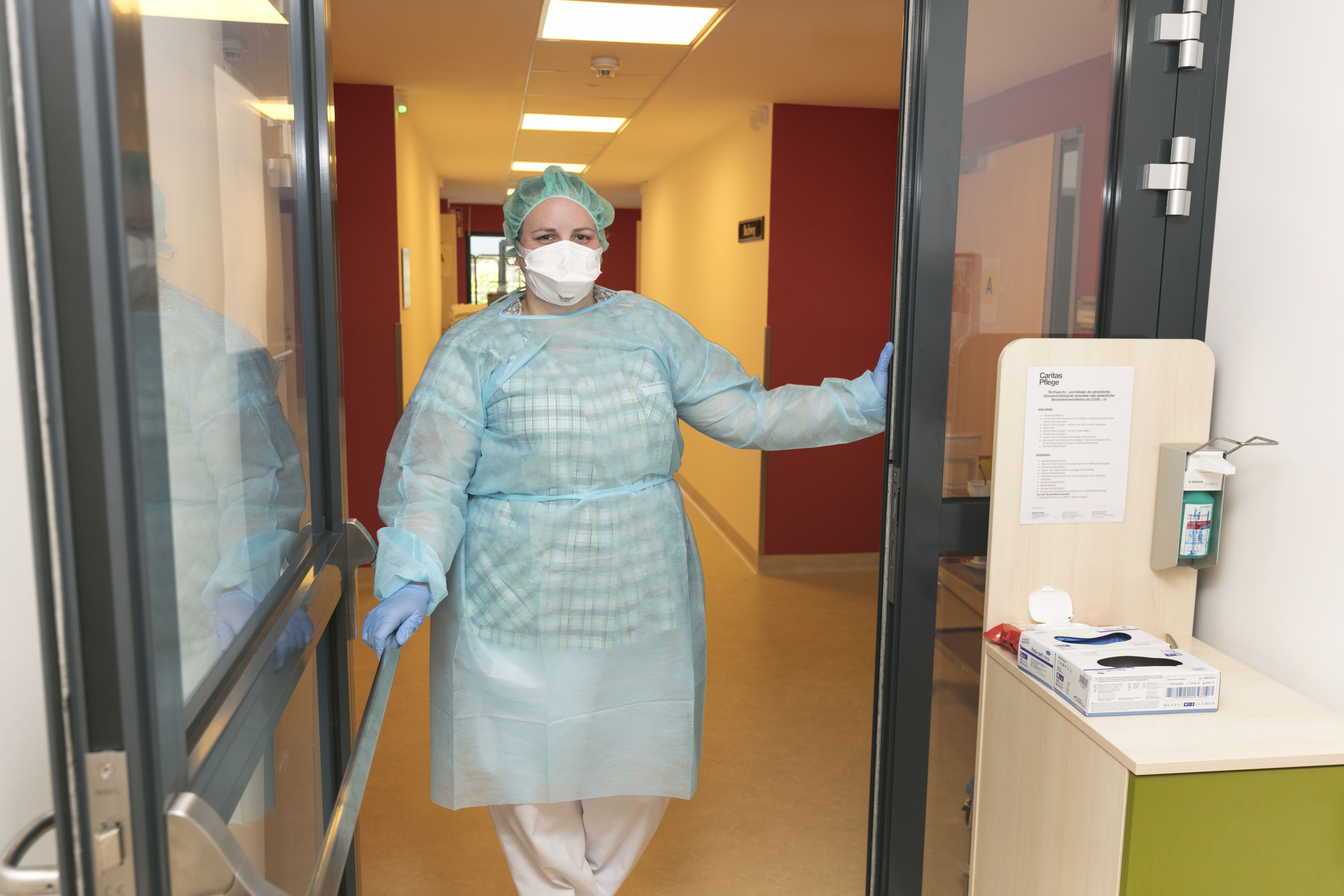Covid-19 in Nursing Homes: Simulation model for prevention and vaccination strategies

Since the beginning of the coronavirus pandemic, residents of nursing homes have been particularly at risk. The spatial proximity to each other favours local transmission chains, and old age combined with pre-existing conditions can lead to severe courses of disease and an increased mortality rate. Political leaders and agencies responded with far-reaching measures, such as bans on visits or restricted community activities. By strictly isolating the homes, the virus was intended to be “locked out”, so to speak. “But at the same time, that meant ‘locking people in’,” says Jana Lasser, a complexity researcher at the Institute of Interactive Systems and Data Science at Graz University of Technology (TU Graz) and working at Complexity Science Hub (CSH) Vienna until March 2021. Through her grandparents, Lasser herself experienced how tense the situation in nursing homes was, especially at the beginning of the pandemic, but also how the lack of social contacts endangers the physical and mental health of older people.
Almost two years later, testing facilities and vaccinations now make it possible to control the spread of infections in nursing homes and at the same time relax isolation measures. Nevertheless, there can always be dramatic developments that require a trade-off between safety and quality of life – for example, when coronavirus mutations or new infectious diseases emerge for which vaccines are not yet available.
Agent-based simulation minimizes risk of infection
Especially at the beginning of a new wave of infections, the optimal combination and timing of individual measures is crucial. Here, a new simulation tool can now facilitate the decision for or against individual measures. Based on information from nursing homes run by Caritas Vienna, Jana Lasser and a team led by Peter Klimek at CSH Vienna have programmed a so-called agent-based simulation of residents and staff in a nursing home.
Agent-based means that individual active entities – in this case people – have been identified and their behaviours modelled using several parameters from empirical observations. Analogous to the behaviours of the people in the care home – these include everyday encounters and interactions – connections are established between these units that map potential infection pathways. The interactions of many individual behaviours result in the dynamics of the whole system.
With this simulation tool, different scenarios in residential care homes can be studied and results relevant to everyday life obtained, the researchers explain in the latest issue of the Journal of the Royal Society Interface.
Balancing safety and quality of life
The work was done at the request of and in close cooperation with the Caritas Vienna. The aid and social organization is engaged in social work, nursing, care for people with disabilities, education, youth work and disaster relief and provided the researchers with insights into the pandemic management of its nursing homes. Based on this, a detailed model of a nursing home was developed and calibrated using Covid-19 outbreak data in Caritas homes.
Two questions were at the centre of the study: What measures can be taken to optimally protect people in residential care homes from a SARS-CoV-2 infection? And how can measures be chosen in such a way that the quality of life of the residents is maintained? Thomas Wochele-Thoma, medical director of Caritas Vienna: “The virus poses a particular threat to older adults. Especially at the beginning of the pandemic, it was difficult to balance the safety of those affected on the one hand and their freedom on the other. As a consequence of the strict measures, older adults were faced with fears of isolation and experiences of loneliness during this period. The jointly developed test strategy was enormously helpful for our pandemic management in the homes. At a time when case numbers were rising in many residential care homes across Austria, infections were the exception in the homes where we piloted and implemented the testing strategy – and at a time when the vaccination was not even available.”
All vaccinated or all unvaccinated
Specifically, the work plays out two scenarios: one without vaccinations and one with a high vaccination rate in the homes. “It is likely that there will be infectious diseases again in the future for which vaccines are not available in the early days, as was the case with Covid-19. For this scenario, our study provides a decision-making basis for organizing preventive measures – such as a testing strategy – in nursing homes,” explains Jana Lasser. The simulations were strongly oriented towards everyday work and were directly relevant to Caritas’ decision-making processes during the pandemic from autumn 2020 onwards.
Vaccination rate is decisive
On the one hand, the study shows that the time gap between sample collection and the test result as well as the accuracy of Covid-19 test results have a great influence on the incidence of infection in nursing homes. Thus, in the scenario of a completely unvaccinated home population, twice-weekly PCR tests of staff and, in the case of positive test results, strict quarantine measures are sufficient to prevent large outbreaks.
In turn, with a current vaccination rate of well over 80 per cent among residents, simulation results indicate that major coronavirus disease outbreaks are no longer to be expected, even if all other measures are relaxed or discontinued. However, the prerequisite is a vaccination protection against infection of at least 60 per cent. “More research is definitely needed here to better assess the effectiveness of vaccinations for older age groups,” Lasser emphasizes. It is therefore recommended that the testing infrastructure in the houses is maintained, voluntary tests carried out on a regular basis and the virus genomes sequenced so that new variants of concern can be detected at an early stage.
Basis for testing strategy in Caritas homes
Based on these simulations, Caritas developed its own testing strategy starting from autumn 2020 and introduced it in its homes. “The fact that nursing homes have largely vanished from public attention shows what a great job our colleagues at Caritas have done,” said the scientific project manager Peter Klimek from CSH Vienna and MedUni Vienna. “This work also shows that only several measures in combination lead to the desired prevention success.”
Currently, measures in the homes are being adapted to the threat assessment against the background of the high vaccination rates in such a way that the quality of life of the people is restricted as little as possible.
“This work is a wonderful example of how helpful reliable simulation tools are, especially in critical phases. The simulation tool we developed facilitates evidence-based decisions. You can play with different variables and immediately see the effects of each measure. It is desirable to use the results of our and other simulation studies for pandemic-related decisions as early as possible,” conclude the project participants.
Original publication:
Agent-based simulations for protecting nursing homes with prevention and vaccination strategies
Jana Lasser, Johannes Zuber, Johannes Sorger, Elma Dervic, Katharina Ledebur, Simon David Lindner, Elisabeth Klager, Maria Kletečka-Pulker, Harald Willschke, Katrin Stangl, Sarah Stadtmann, Christian Haslinger, Peter Klimek, Thomas Wochele-Thoma.
Journal of the Royal Society Interface, Dec. 2021
This research topic is anchored in the Field of Expertise “Information, Communication & Computing”, one of the five strategic research foci at TU Graz.
Kontakt
Jana LASSER
Dr.rer.nat. BSc. MSc.
TU Graz | Institute of Interactive Systems and Data Science
Phone: +43 316 873 30689 | jana.lasser@tugraz.at
Peter KLIMEK
Associate Prof.
Complexity Science Hub Vienna
klimek@csh.ac.at
Martin GANTNER
Communications | Caritas Vienna
Phone: +43 676 88952760 | martin.gantner@caritas-wien.at





